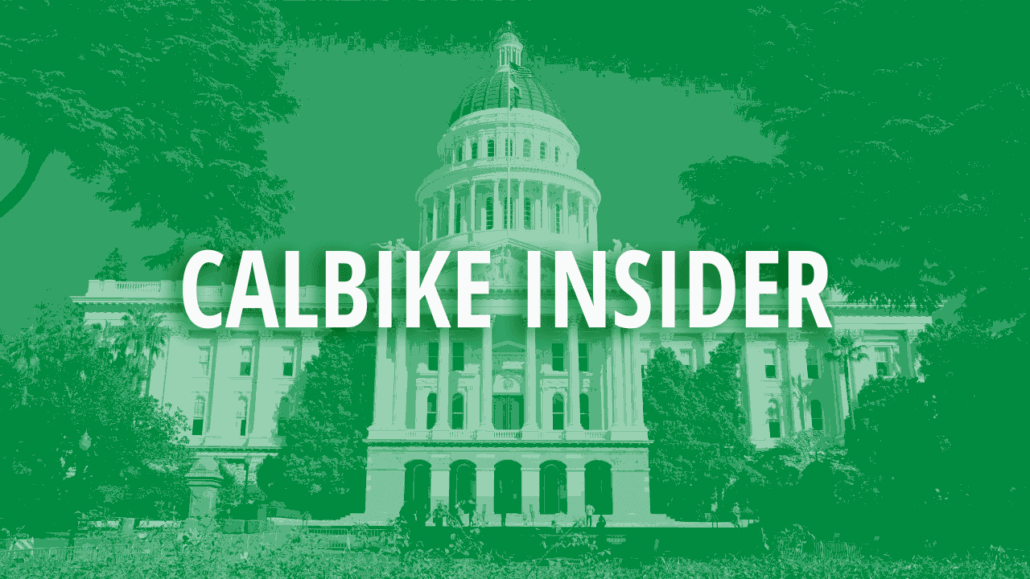Budget Deal Restores ATP Funding
California’s Active Transportation Program (ATP) provides dedicated funding for biking and walking improvements across the state. CalBike championed the creation of the ATP and has continued to advocate for additional funding. We applaud the legislature and the governor for restoring planned funding to the ATP in the 2023-24 state budget. With the budget deal, the ATP will continue to operate with its historic billion dollar one-time expansion and provide critical infrastructure, as we saw in the final list of Cycle 6 projects.
ATP budget in flux
In 2022, with a historic budget surplus, we asked for $2 billion for bikes in the state budget. We didn’t get the full $2 billion, but we got $1.1 billion allocated to the ATP, more than tripling previous annual funding. But, as this year’s budget deficit began to come into focus, Governor Gavin Newsom’s initial budget clawed back $500 million from the ATP. The governor promised to find $300 million of that from other sources, but that still left the program $200 million short.
The final budget deal restored full funding. The California Transportation Commission (CTC), which oversees the ATP and scores projects submitted for funding on a scale of 1 to 100. It approved an additional 134 projects in June, on top of projects previously approved. As Streetsblog reported, the additional funding allowed the CTC to fund projects that scored 92 and above in Cycle 5; an extra $1 billion allowed the commission to extend funding to those with scores of 89 and above in Cycle 6.
Funding for the ATP has increased but not enough to meet demand as California communities scramble to add safe biking and walking infrastructure to streets designed to move cars at deadly speeds. Even with extra one-time funds, many worthy projects don’t make the cut. That means bike lanes and pedestrian improvements delayed or scrapped. This is why CalBike is advocating for $10 billion for bikes, or half of California’s transportation dollars to reverse the historic deficit in building active transportation infrastructure.
How does the ATP work?
If you’re wondering what Cycle 5 and Cycle 6 mean, the explanation requires a deep dive into planning timelines. Let’s start with a history of the ATP.
Created by the state legislature in 2013 to consolidate the efforts of several disparate funding sources, the ATP serves as a central hub for bike and pedestrian projects. The State Senate bill that created the ATP specifically calls for the program to “increase the proportion of trips accomplished by biking and walking” and “increase safety and mobility for nonmotorized users.”Since its inception, the ATP has funded over 800 active transportation projects across the state, benefiting both urban and rural areas. Half of the funded projects have been Safe Routes to Schools.
SB 1 (Beall, 2017), also known as the Road Repair and Accountability Act of 2017, significantly augmented ATP’s funding, directing an extra $100 million a year to the ATP and doubling its funding.
Although the funding comes in annually, the CTC accepts applications for another cycle of ATP grants every two years. Cycle 5 was in 2021 and Cycle 6 was this year. Just to make the math more confusing, the grants are distributed over five years, since it can take time to complete the projects.
In 2021, the ATP approved grants for 49 projects in Cycle 5, barely 10% of the applications received. Funded projects included:
- $30 million for Connecting Canoga Park – beautifully detailed with maps and renderings here.
- $10 million for Safe Routes to School in Koreatown, Los Angeles – with extensive detail on crosswalk and safety features here.
- $1440 for the Pollock Pines Pony Express Trail Bicycle and Pedestrian Improvements – outlined here.
$10 billion for bikes
The one-time boost in ATP funding allowed CTC to greenlight three times as many projects in Cycle 6 as in Cycle 5 (15 Bay Area projects, plus rural grants, and the 134 projects approved in June, for a total of more than 150). That still left many excellent biking and walking infrastructure projects without state funding.
The ATP isn’t the only funding source for active transportation infrastructure. Local and regional monies pay for projects as well. And there are billions more in the state transportation budget that should shift. With the threat of climate crisis looming ever larger, we need to create space for low- and no-carbon transportation fast, and that requires much more support at the state level.
CalBike is asking our elected officials to spend less on building climate-killing freeways and more on Complete Streets and people-centered transportation infrastructure. Look for our new Complete Streets Campaign, coming later this year. And, of course, we’ll continue to push for $10 billion for bikes.




